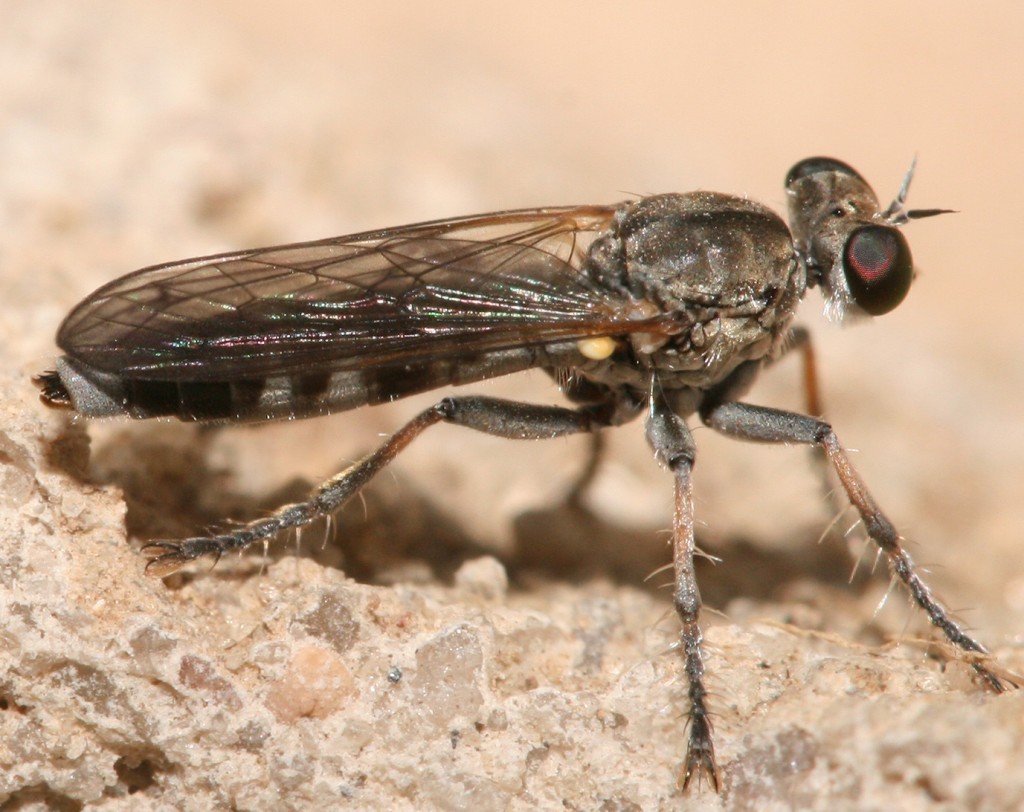
Also called assassin flies, these true flies belong to the Asilidae family. There are over seven thousand different species in the family, with over one thousand in North American where they are especially diverse in sunny arid environments. Robber flies are between one and two inches long usually with an elongated body and tapered abdomen although some species bumblebee or wasps. The body may be grey, black or brown, hairy or bare. There is a depression in the top of the head between the large compound eyes and bundles of stiff bristles on the face. The legs are long, thin and bristled, and the wings are often narrow and adapted for rapid flight. The mouth parts are modified for piercing-sucking .
Robber flies are voracious eaters and aggressive generalist predators. They feed on a large variety of other insect pests including Colorado potato beetle, grasshoppers, Japanese beetles, Mexican bean beetles, aphids, leafhoppers, other flies and many more. Unfortunately, they also feed on bees, dragonflies, butterflies, ichneumon wasps, spiders and other beneficial fauna. Robber flies are usually most active during the hottest part of the day and perch in a high sunny place where they can target prey often grabbing them in midflight. They inject the prey with saliva that paralyzes them and then digests the body content that is sucked out by the robberfly.
Robber fly courtship is similar in nature to their feeding behavior with the male capturing the female in midflight. After copulation the female lays clusters of white eggs on near on the the ground on plants or in cracks and crevices. The worm-like larvae go through four stages and live in the soil or decaying organic matter. They are predatory and eat insect eggs and larvae as well as soft bodied adult insects. The robber fly larvae overwinter and pupate in the soil emerging as adults in spring. Depending on the species and climate the life cycle takes one to three years.
An open sunny spot with plenty of shrubs and herbaceous plants will attract and maintain a desirable population of robber flies. The greater the diversity of plant material the more prey will come to the area to provide food for the robber flies. Since robber flies seek cover at night densely planted vegetation is highly desirable. The avoidance of broad spectrum insecticides is also very helpful.